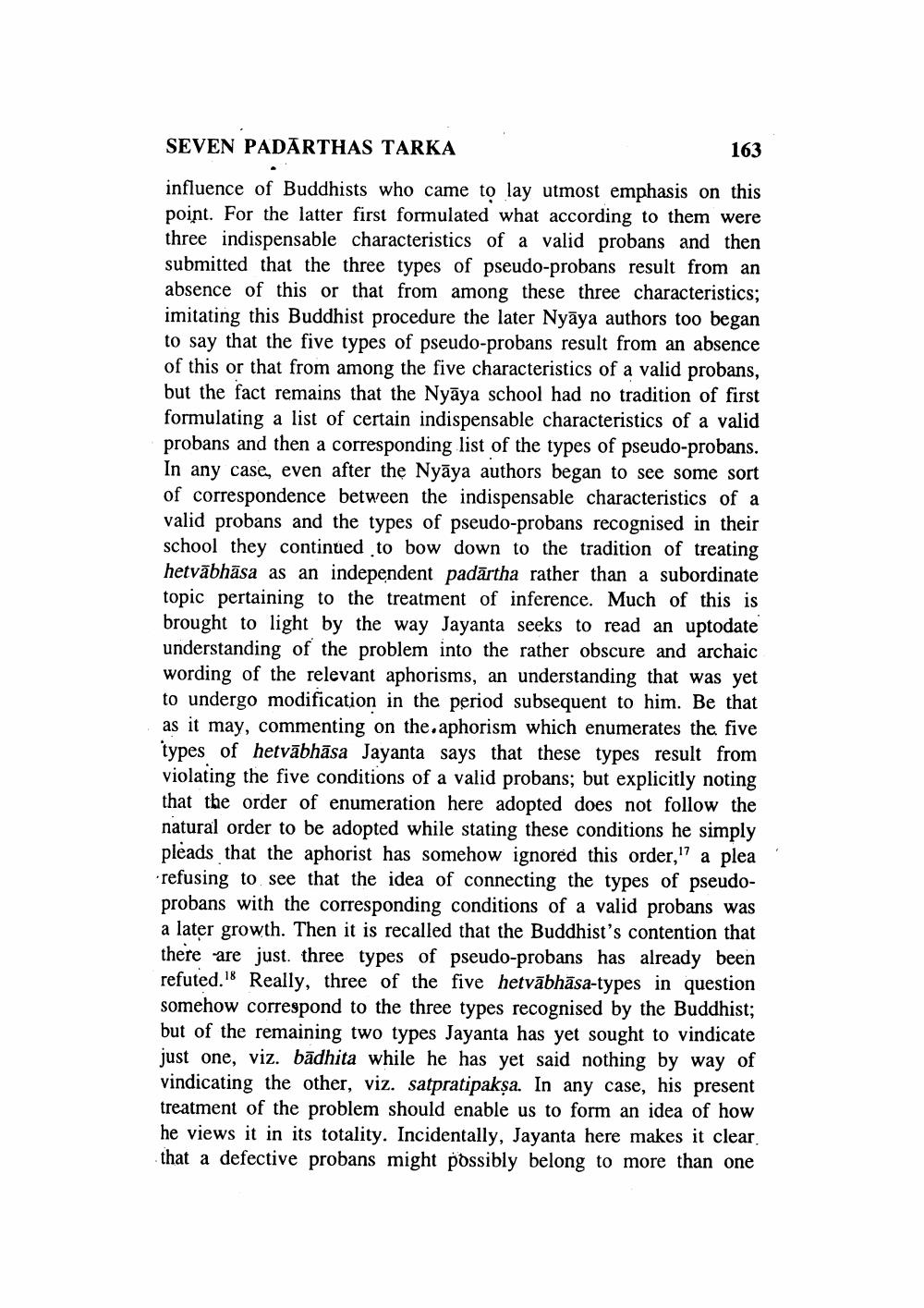________________
SEVEN PADĀRTHAS TARKA
163
influence of Buddhists who came to lay utmost emphasis on this point. For the latter first formulated what according to them were three indispensable characteristics of a valid probans and then submitted that the three types of pseudo-probans result from an absence of this or that from among these three characteristics; imitating this Buddhist procedure the later Nyāya authors too began to say that the five types of pseudo-probans result from an absence of this or that from among the five characteristics of a valid probans, but the fact remains that the Nyāya school had no tradition of first formulating a list of certain indispensable characteristics of a valid probans and then a corresponding list of the types of pseudo-probans. In any case, even after the Nyāya authors began to see some sort of correspondence between the indispensable characteristics of a valid probans and the types of pseudo-probans recognised in their school they continued to bow down to the tradition of treating hetvābhāsa as an independent padārtha rather than a subordinate topic pertaining to the treatment of inference. Much of this is brought to light by the way Jayanta seeks to read an uptodate understanding of the problem into the rather obscure and archaic wording of the relevant aphorisms, an understanding that was yet to undergo modification in the period subsequent to him. Be that as it may, commenting on the aphorism which enumerates the five types of hetvābhāsa Jayanta says that these types result from violating the five conditions of a valid probans; but explicitly noting that the order of enumeration here adopted does not follow the natural order to be adopted while stating these conditions he simply pleads that the aphorist has somehow ignored this order,"? a plea refusing to see that the idea of connecting the types of pseudoprobans with the corresponding conditions of a valid probans was a later growth. Then it is recalled that the Buddhist's contention that there are just three types of pseudo-probans has already been refuted.18 Really, three of the five hetvābhāsa-types in question somehow correspond to the three types recognised by the Buddhist; but of the remaining two types Jayanta has yet sought to vindicate just one, viz. bādhita while he has yet said nothing by way of vindicating the other, viz. satpratipaksa. In any case, his present treatment of the problem should enable us to form an idea of how he views it in its totality. Incidentally, Jayanta here makes it clear that a defective probans might possibly belong to more than one




